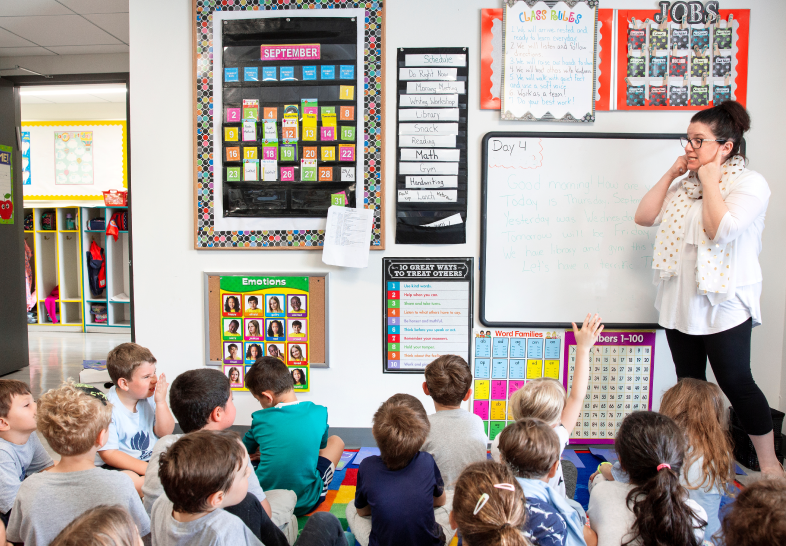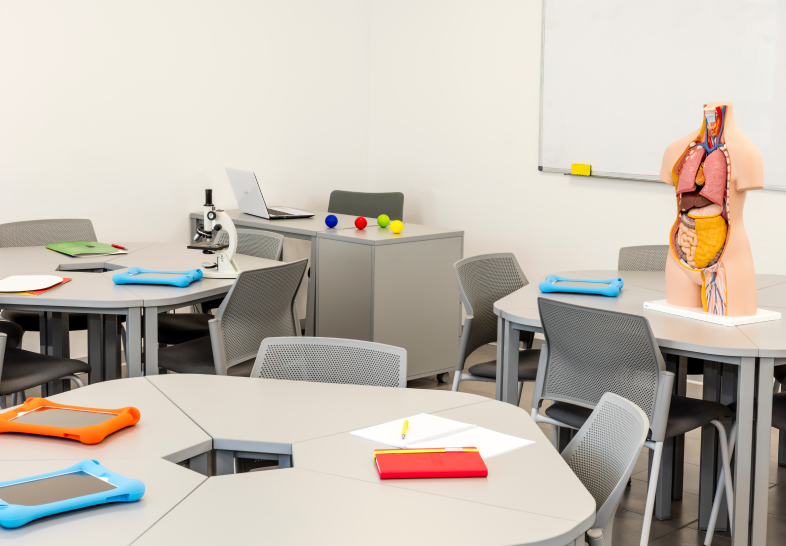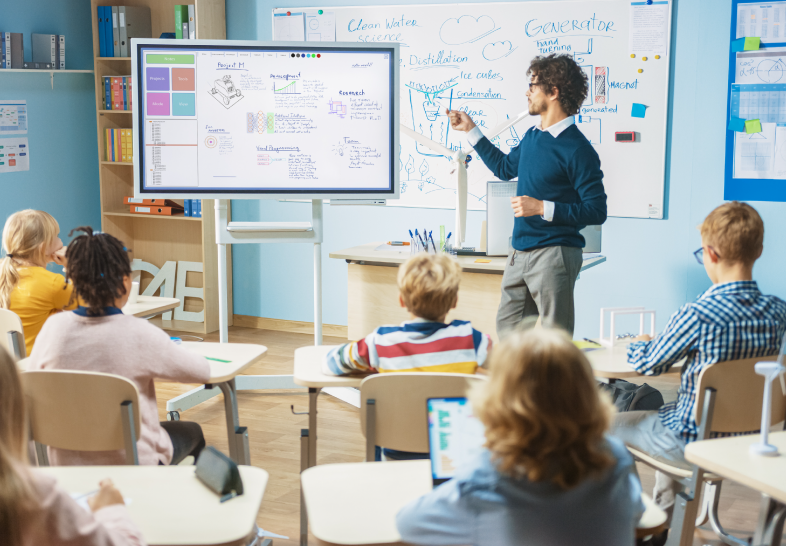How will you make next school year even better than the last? You can’t control every factor, but you can create the most positive classroom environment with the right supplies, accessories, and furniture. We’ve created this guide to help you set the scene.
1. Classroom organization supplies

Clear space, clear head. It’s true at home, at the office, and in the classroom. In fact, these organization tips for the workplace may inspire you for your classroom. Let’s look at some more ways you can get your classroom organized.
Storage bins and carts
There are so many ways storage containers and carts can be useful in classrooms, from preschool up through high school. Think craft corners, space for extra supplies, activities, toys, and the list goes on. Finding the right boxes and bins to store all these items is a good start to preventing clutter in a classroom.
Storage cabinets, shelves, cubes
Once you’ve got everything put away, how do you organize the bins? There are some great storage furniture options for the classroom. For younger kids, storage cube shelves are ideal for keeping toys readily available and at their level. For older kids, more traditional shelves or storage cabinets are the way to go to keep things tidy.
File folders and labels
Then there’s the paperwork to organize – activity sheets, homework, etc. File folders and labels may seem old school, but there’s a reason this system is tried and true. We think this is the best way to go for these items.
2. Paper and writing/drawing tools

A positive classroom environment encourages creativity. You’ll want plenty of paper and writing/drawing tools on hand for students to complete creative projects and express themselves.
Writing and coloring
The writing tools you’ll need for your room will depend highly on the age range you teach. You probably don’t want to give kindergarteners permanent markers, and high schoolers probably won’t appreciate being given crayons to chart graphs. Stock up on drawing & coloring, your preferred style of pencils, pens, or any other writing implements that will suit your students.
Loose leaf paper
This is another supply that will really vary by age group. Will you need construction paper, copy paper, lined paper, or graph paper? You’ll likely need a few of these types to keep your room stocked with what your students need.
Notebooks
It’s always smart to have extra notebooks and notepads on hand. You may even want to assign each student a designated notebook for journaling or creative writing assignments, depending on their age and your curriculum.
3. Classroom decorations and teaching resources

Time to talk about the best part – decorations! This is where you sprinkle in the fun. Decorations in a classroom can range from cute borders to educational posters; it’s totally up to you. And while you’re bringing the fun, think about rewards and incentives you can give out as another way to keep students’ spirits high.
Classroom decorations and posters
Students might take it for granted, but walking into a classroom that’s been thoughtfully decorated creates a warm, welcoming feeling. Think about the kind of classroom decorations that best suit your class, and consider changing them up every unit or semester to keep it fresh and relevant. Posters and charts are a functional addition that can further deck out your space.
Teaching aids
Teaching aids are another tactile way to get students engaged. Think plastic coins to teach math problems, cards to practice sentence building, dice, and more accessories to help with lessons. These items can be a big help, especially for younger kids.
Rewards and incentives
Fill up your prize bin! Incentivizing students is a surefire way to keep them engaged and motivated. Pick out things you know they’ll love, like stickers, fidgets, miniature notepads, and more fun little items.
4. Classroom furniture

Now, the biggest piece: furniture. The right classroom furniture can help you create a flexible, collaborative classroom. More on this in our earlier post we’ve linked to above, but we’ll summarize some key points here.
Desks and chairs
Neat rows of desks are probably not the set up you’re looking for. There are so many ways classroom furniture like tables, chairs on wheels, and lightweight desk and chair combos can help you create a dynamic learning environment.
Whiteboards and easels
The whiteboard: where the magic happens. Whether you’re looking for a new large whiteboard for your room or you want to add mini whiteboards to the mix, it’s important to compare types and find the best ones. You might even consider whiteboard sheets to turn any surface into a whiteboard. Our guide on choosing the best whiteboard can help.
5. Classroom technology

Last but not least, let’s look at technology that can enhance learning experiences. Find the balance of pen & paper and digital solutions that works best for you and your students.
Projectors and TVs
Get set for everyone’s favorite day of class: Movie day! Jokes aside, educational films have a valuable place in the classroom and you’ll need the right equipment to play them. Pick out a projector or flat screen tv to set your classroom up for success in this area.
Tablets and laptops
Digital literacy is so important in today’s world. Think about the type of tablets or laptops that are best suited for the age range you teach and what features are a must for your lesson plans.
The place to go to check everything off your school supply list – Quill
Quill is the place to shop for your school. Bookmark this helpful checklist and fill up your cart with everything you need for an amazing school year.
